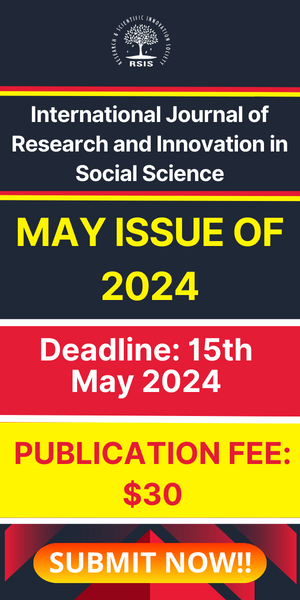Effects of Prices Before and After Tax and Income Per Capita on Tobacco Consumption in Kenya: Cointegration Approach
- December 29, 2018
- Posted by: RSIS
- Category: Economics
International Journal of Research and Innovation in Social Science (IJRISS) | Volume II, Issue XII, December 2018 | ISSN 2454–6186
Edwin Kipyego Kipchoge1,*, Silas Kiprono Samoei2, Daniel Kipruto Tuitoek3, Mathew Kipkoech Bartilol4
1Postgraduate Student, University of Eldoret Department of Mathematics and Computer Science; P. O. Box 1620-30100, Eldoret, Kenya
2,4Postgraduate Student, Moi University, Department of Agricultural Economics and Resource Management; P. O. Box 631-30100, Eldoret, Kenya
3Lecturer, Moi University, Department of Economics; P. O. Box 3900-30100, Eldoret, Kenya
*Corresponding author
Abstract: Cigarette smoking is one of the causative agents of the various cancerous diseases and deaths among other factors worldwide. In fact, it is the leading cause of deaths in the world in cancer deaths yet it is preventable. Governments worldwide drain a lot of money into cancer institute to cater for treatment of cancer, which is attributed with the consumption of tobacco and its products. Despite the many studies and campaigns against this menace, the “war” is still on for the “enemy” is still taking on the lives of loved ones and potential individuals who would steer up Kenya’s economic growth and development. Tobacco death toll will continue to escalate with each passing year incase Kenyans decide to give up the fight against the vice. This study sought to analyze tobacco consumption with respect to the prices of tobacco both before and after tax and also with respect to income per capita. The study employed time series analysis. Data was extracted from statistical abstracts. Other sources were economic survey published by the Kenya National Bureau of Statistics. The sample period was 1980 to 2016. Unit root test was estimated using Augmented-Dickey-Fuller and Phillips-Perron tests. There were no unit root at levels but first differencing they became stationary. Johansen’s cointegration and Phillips-Ouliaris’ cointegration tests was employed to determine if the variables are cointegrated. There was one cointegrating equation and therefore Vector Error Correction Model (VECM) was used to estimate the parameters of the model. All the three null hypotheses were rejected since all p-values were less than 0.05 level of significance. Roots of companion matrix used to check model stability. Langrage Multipliers were used to test for residual autocorrelation. It is expected that results obtained provides guide on policy formulation on tobacco pricing, taxation and suggested ways of reducing tobacco consumption and ensure a healthy and productive economy in general and assist governments to acquire more tax revenue for their economic budgets.


